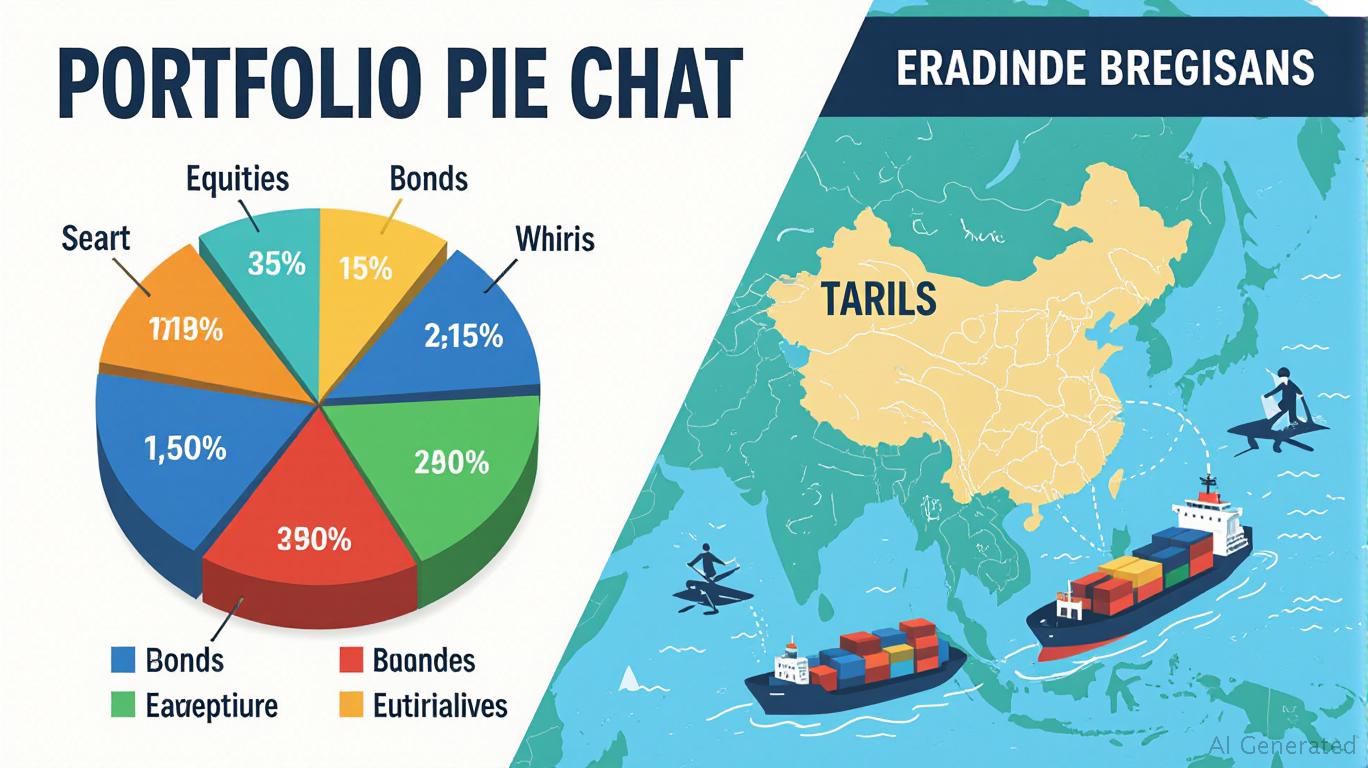Navigating Tariff Turbulence: Building a Resilient Portfolio Through Diversification and Active Management
The global economy is navigating a treacherous landscape shaped by escalating tariffs, geopolitical tensions, and the delicate balance between growth and inflation. Recent U.S. trade policies, including sharp tariff hikes on Chinese imports and sector-specific restrictions, have triggered historic volatility in equity markets. The S&P 500 plummeted over 10% within two days of the April 2024 tariff announcements before rebounding partially—a stark reminder of how policy uncertainty can upend investor confidence. BlackRock's analysis underscores that this volatility is not a temporary blip but a new reality. To thrive in this environment, investors must prioritize strategic diversification and active management, leveraging tools like low-volatility equities, liquid alternatives, and short-duration bonds to mitigate downside risks while capitalizing on market dislocations.
The Growth-Inflation Tightrope: Why Tariffs Matter Now
Tariffs act as a double-edged sword: they shield domestic industries but raise input costs for businesses and consumers, distorting the growth-inflation equilibrium. BlackRock's Fundamental Fixed Income team has revised its 2025 GDP growth forecast to 0%, while core inflation expectations have risen to 3.8%, with further hikes possible if tariffs escalate. A 20% effective tariff increase could reduce global GDP by 2-2.5%, potentially triggering a shallow recession. This creates a precarious environment for portfolios: equities face margin pressures, bonds struggle with rate sensitivity, and sectors like consumer discretionary or industrials—highly exposed to trade flows—are vulnerable to profit downgrades.
Building Resilience: A Three-Pillar Strategy
1. Low-Volatility Equities: Anchoring the Core
The key to weathering volatility lies in minimizing downside exposure without sacrificing upside potential. BlackRock's research highlights minimum volatility strategies as critical portfolio ballast. The iShares
USA Min Vol Factor ETF (USMV), for instance, fell just 8.6% during the February-April 2024 equity selloff, compared to the S&P 500's 18.8% drop. This ETF targets firms with stable earnings, low leverage, and defensive sector tilts (e.g., utilities, healthcare), traits that insulate portfolios from growth shocks.Sector-specific opportunities also emerge. Utilities and consumer staples—historically less sensitive to growth and inflation swings—remain defensive anchors, though valuations in consumer staples are elevated. Healthcare subsectors like providers, trading at 13x forward earnings, offer better entry points. Active managers can further refine this approach by overweighting companies with pricing power or exposure to secular trends like AI-driven productivity gains.
2. Liquid Alternatives: Diversifying Beyond Correlation
Equities and bonds have traditionally offered diversification, but their correlations have surged in volatile periods. Enter market-neutral strategies, which exploit pricing inefficiencies across assets without directional bias. The
Global Equity Market Neutral Fund (BDMIX) exemplifies this: it rose 5% during the February-April equity downturn by taking offsetting long and short positions in stocks. Such strategies thrive in dislocated markets, as seen in April 2024 when BDMIX's short exposure to tech stocks and long positions in undervalued industrials created asymmetric returns.Gold (e.g., iShares Gold Trust IAU) also plays a role here, acting as a geopolitical hedge. With global military spending poised to rise (NATO aims for 5% of GDP allocations), gold's safe-haven appeal could strengthen further.
3. Fixed Income: Short Duration, Smart Exposure
In bond markets, the mantra is yield without duration risk. Short-term Treasury bills (e.g., 0-5 year maturities) offer 4% yields—a generational high—while shielding investors from rising rate sensitivity. The
ETF (STIP) adds inflation protection, critical as tariffs fuel input cost pressures.For higher yields, BlackRock advocates high-quality corporate credit (6-7% yields) and European investment-grade bonds, which offer superior spreads compared to U.S. Treasuries. Active managers can further enhance returns by rotating into sectors like energy or financials, which benefit from rate hikes and commodity price stability.
Active Management: The Edge in Dislocated Markets
Tariffs create sector and geographic winners and losers. Active managers excel here by:
- Sector Rotations: Overweighting defense tech, space infrastructure, or AI-driven automation (e.g., robotics) while underweighting trade-sensitive sectors like semiconductors.
- Geographic Agility: Focusing on regions like Latin America, which could benefit from trade diversification, or Japan, where undervalued equities and yen appreciation create opportunities.
- Currency Plays: Shorting the U.S. dollar against EM currencies (e.g., Mexican peso) if tariffs lead to weaker U.S. growth relative to EM peers.
The BlackRock Tactical Opportunities Fund, for example, exploited these dynamics in Q1 2024 by shorting the dollar against the euro and extending shorts in long-dated Treasuries, capitalizing on mispriced inflation risks.
Final Considerations: Stay Invested, Stay Nimble
History shows that exiting markets during volatility often means missing out on the strongest recovery days. BlackRock's data reveals that investors who maintained exposure through the April 2024 selloff outperformed those who panicked. Dollar-cost averaging and long-term discipline remain vital, even as tactical adjustments are made.
Portfolio Takeaways for 2025
- Core Allocation: 40% low-volatility equities (USMV), 30% short-duration bonds (STIP), 20% liquid alternatives (BDMIX), 10% gold (IAU).
- Active Satellite: 10-15% allocated to active managers with flexibility to exploit sector/geo dislocations (e.g., defense tech, AI infrastructure).
- Monitor: Trade policy developments, inflation data, and geopolitical risks to adjust exposures dynamically.
In a world where tariffs are both a sword and a shield, portfolios must be built to endure shocks while harvesting opportunities in the cracks. Diversification is no longer just about asset classes—it's about strategic depth and the agility to pivot as the global economy navigates this uncharted terrain.

Sign up for free to continue reading
By continuing, I agree to the
Market Data Terms of Service and Privacy Statement

Comments
No comments yet